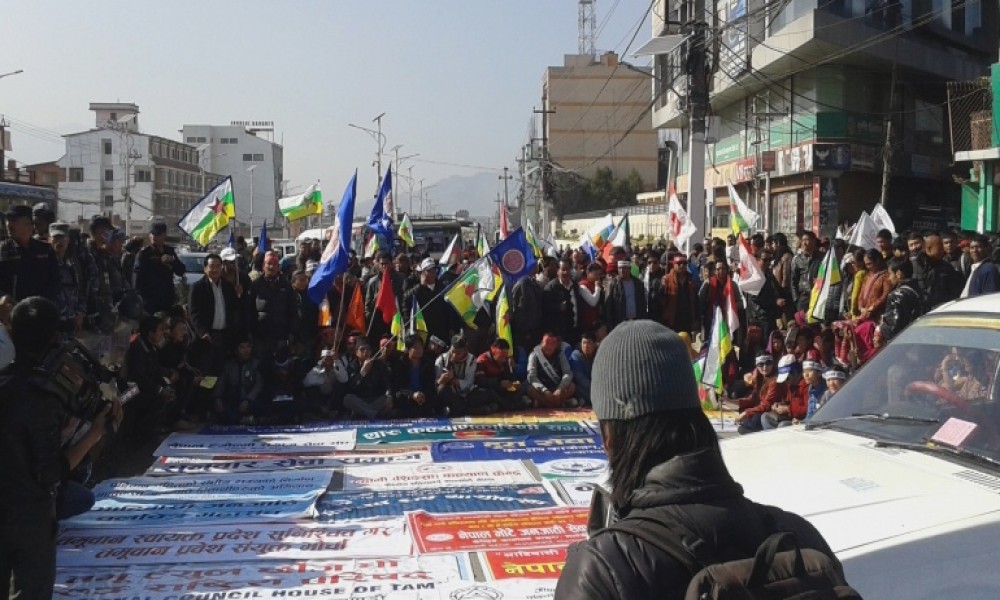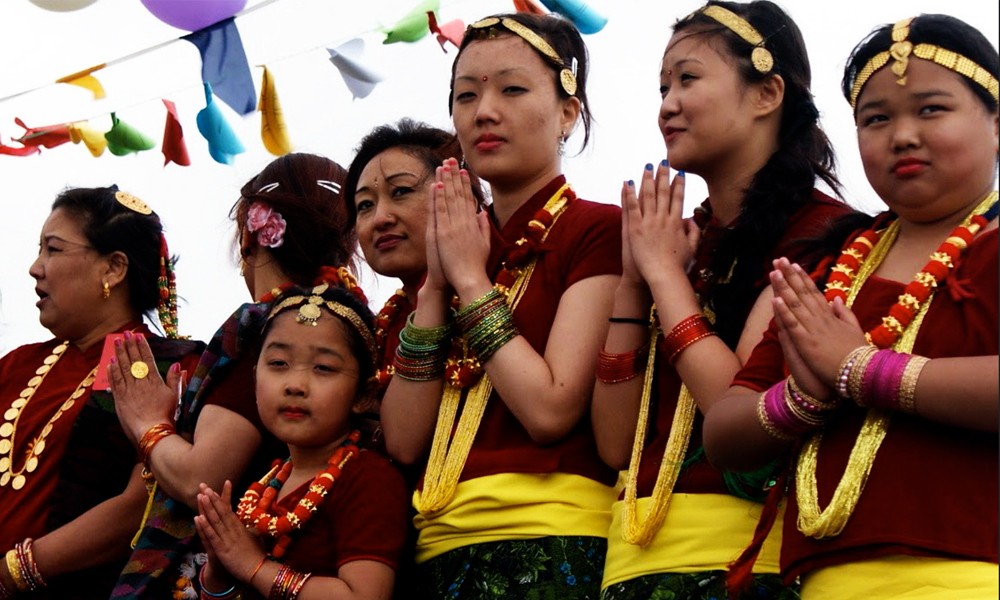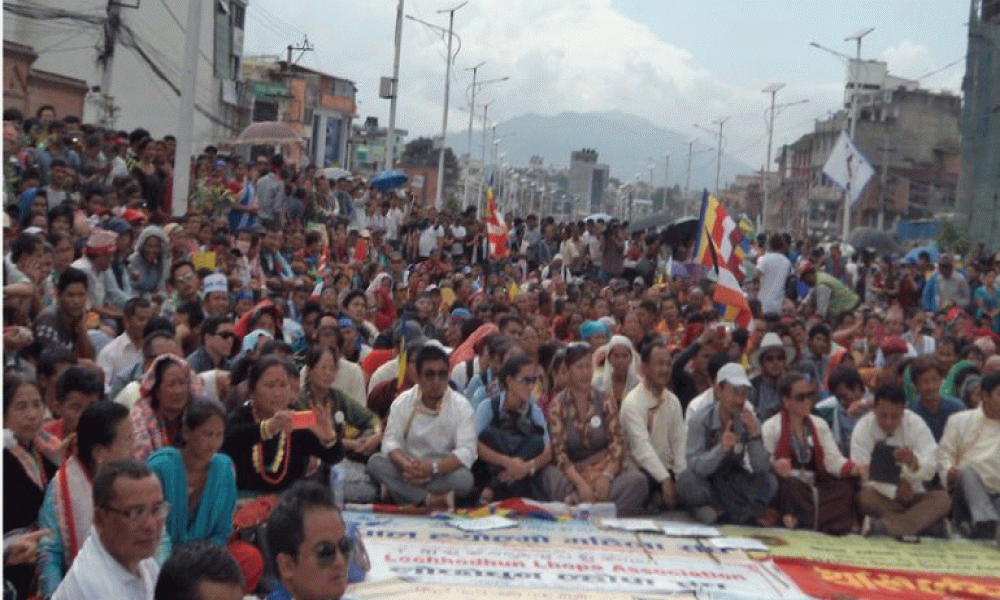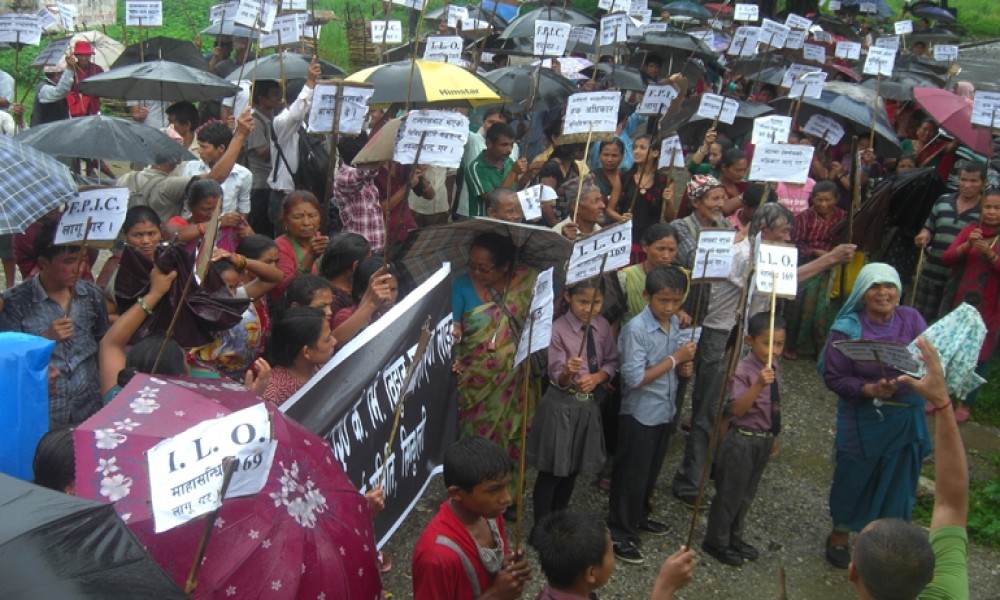The Jan Andolan-1990 was definitely a watershed moment in Nepal's political history. But it failed to fulfill hopes and aspirations of Indigenous Peoples marginalized politically, socially, culturally and religiously. The success of the Jan Andolan led to restoration of multi-party democracy. But it did not change the fundamental nature of the state. As in the party-less Panchayat system, the nature of the state remained feudal and centralized.
It is not that no efforts were undertaken to transform the state. The constitution-1990 defined Nepal as a multi-ethnic, multi-lingual and multi-cultural nation. But, the reality was different. No matter what was enshrined in the constitution, the state was still dominated by the same class, community, religious and linguistic group. More appallingly, the country remained a Hindu kingdom.
Despite rhetoric about a multi-lingual nation, the state did not treat mother tongues and dialects of various ethnic groups on a par with Khas/Nepali language.
Despite rhetoric about a multi-lingual nation, the state did not treat mother tongues and dialects of various ethnic groups on a par with Khas/Nepali language. The constitution recognized myriad mother tongues and dialects as national languages but Khas/Nepali was bestowed with the higher status of the language of the nation. A regressive Supreme Court (SC) verdict in 1999 also reflected how the state deemed Khas/Nepali and other mother tongues/dialects. Until then, the Kathmandu Metropolitan City (KMC) office had been using Nepal (Newar) language as an alternative official language other than Khas/Nepali. Similarly, Dhanusha District Development Committee (DDC) and Rajbiraj Municipality had recognized Maithali as an alternative official language. Acting on a writ, the SC ordered the KMC office, the Dhanusha DDC and Rajbiraj municipality not to use Newari/Maithali languages as alternative official language. It was a regressive verdict and Indigenous Peoples still remember that day as a Black Day.
The state did not adopt an exclusionary and discriminatory policy only after 1990. It was in effect for decades right from the time of unification of modern Nepal at the hands of Prithvi Narayan Shah and his successors. It was why Indigenous Peoples became backward and lagged behind the ruling communities. Although the political change of 1990 did not transform the state, it prepared a ground for the struggle of Indigenous Peoples. It was after 1990 that Indigenous Peoples challenged social, economic and political discrimination and oppression. They started raising their voices for inclusion, participatory process and proportional representation. They also started pressing for rights to self-determination and ethnic identity-based federal provinces.
In 2001, the country took a regressive course. It created an opportunity for Indigenous Peoples to unite themselves and move forward more strongly toward realizing their political aspirations. Expressing solidarity with political parties' anti-regression agitation, Indigenous Peoples descended on the streets.
In 2001, the country took a regressive course. It created an opportunity for Indigenous Peoples to unite themselves and move forward more strongly toward realizing their political aspirations. Expressing solidarity with political parties' anti-regression agitation, Indigenous Peoples descended on the streets. I led the agitation of Indigenous Peoples in my capacity as the then general secretary of the Nepal Federation of Indigenous Nationalities (NEFIN). In February 2005, the then king Gyanendra Shah seized power, further agitating Indigenous Peoples. They understood the direct rule by the king was not a solution to their plight. So they formed a joint struggle committee, rallying all indigenous communities against the king's anti-democracy move.
Indigenous communities demanded federal democratic republic, secularism, equality, independence, reservation in government services and education quotas. They did not restrict their movement to the capital but spread it across the country. Even when political parties failed to hit the streets, indigenous communities rallied thousands of people against the coup and for inclusion, equality and democracy. They defied curfews, broke into restricted areas and braved baton-charging.
Indigenous organizations also inspired political parties to intensify protests. They fought alongside political parties and defeated the king's ambition for returning the country to the pre-1990 era.










